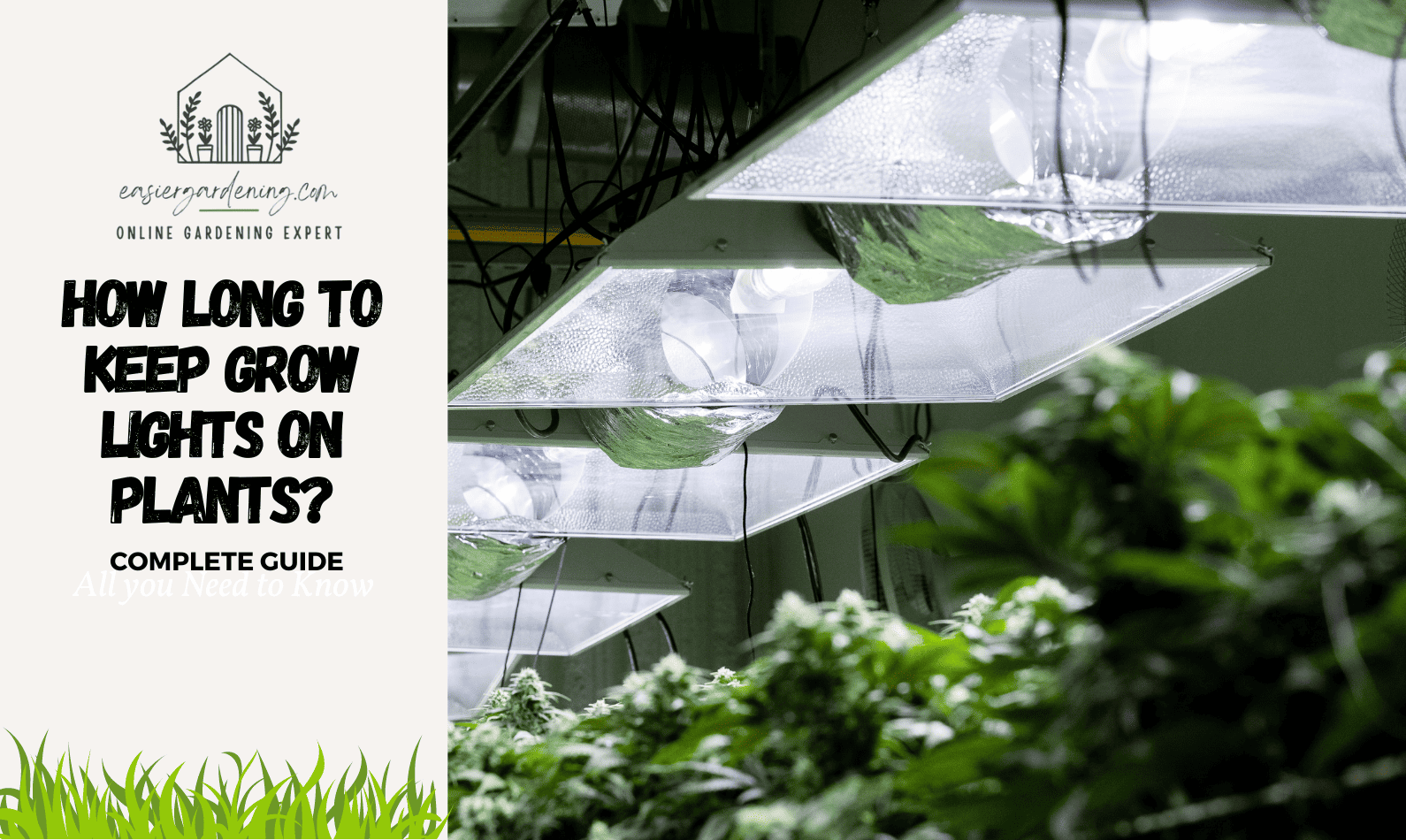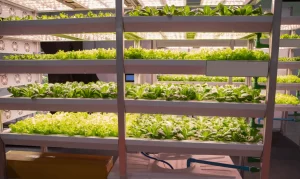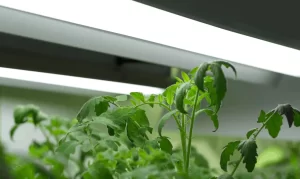How long to Keep Grow Lights On Plants?: One of the most common myths regarding indoor plants that I’ve come across is that they don’t need much light. In fact, the opposite is true! They will need as much light as possible to live indoors in our homes and continue to provide us with lush and leafy growth.
I had no idea about plants at the start of my indoor plant adventure. I simply chose one that piqued my interest and tucked it into a corner. When I learned more, I realized that the way I was caring for them was probably not the right way to meet their needs. Giving plants as much light as possible will work against our plans to spruce up the bare corner or dark space in need of some life. What should a plant gal (or guy) do?
That’s when I discovered grow lights for indoor plants, and they’ve changed my life! If you want your plants to flourish, need a plant for that low-light corner, or just want to grow plants indoors that you wouldn’t usually be able to (like herbs, vegetables, and flowers), a grow light may help. If you’re unfamiliar with grow lights, keep reading to learn how to use them for indoor plants.
Contents
- What Is A Grow Light (Or Plant Light) Anyway? How long to Keep Grow Lights On Plants?
- Is It Possible To Use A Normal Light Bulb As A Grow Light?
- How Long Should A Grow Light Be Left On?
- Where Should I Position My Grow Light?
- How Far Away From My Plants Should A Grow Light Be?
- What Is Color Grow Light Best?
- Conclusion: How long to Keep Grow Lights On Plants?
What Is A Grow Light (Or Plant Light) Anyway? How long to Keep Grow Lights On Plants?
Plants use light in a different way than humans. Plants use light as energy to photosynthesize and grow, just as we do. A grow light is specifically designed to provide plants with the correct form of light in the spectrum that they need for survival.
Is It Possible To Use A Normal Light Bulb As A Grow Light?
- Although some regular light bulbs can produce some of the specific light waves needed by plants, they are generally ineffective when it comes to planting growth. This is due to the fact that they are intended to brighten our homes.
- The spectrum of light used by a grow light, its power, colors, and even the nature or shape of the light itself all contribute to providing a plant with the full amount of energy required to grow.
- Some grow lights may appear to be ordinary household globes. However, bear in mind that how our eyes interpret and use light differs greatly from how plants perceive and use it.
How Long Should A Grow Light Be Left On?
The length of time a grow light should be turned on is determined by a number of factors. They include the type of light you’re using, the atmosphere in which your plant is growing, and the purpose of the light (e.g., foliage growth, vegetables or flowering).
You should follow the directions that come with the light you use. However, as a general reference, here are a few pointers.
- Grow lights must be turned on for at least 8-10 hours a day to be reliable. Depending on the circumstances, this can last up to 16 hours. That is why LED grow lights are so popular – if they must be left on all day, it is best to use an energy-efficient model!
- A grow light should always be placed above the plant. This simulates sunlight. Plants will naturally gravitate toward a light source, so placing them above is often the best option.
- If your grow light begins to heat up, make sure it is not touching or getting too close to the plants.
- Young or shade-loving plants can benefit from less powerful grow lights, while large plants and those with large leaves that can absorb a lot of light (e.g. Fiddle Leaf Figs) can benefit from a stronger light.
Frequently Answered Questions
Where Should I Position My Grow Light?
Consider how a plant receives sunlight in nature – from above! Many people use grow lights clipped to the plant’s foundation as a replacement for their ceiling lights or even put in a lamp with a shade next to the plant. While this will help you grow light to blend in with your decor, it will not be helpful to the plant.
Grow lights must be placed very near and unobstructed to a plant in order to have some impact. And, just as indoor plants can begin to gravitate toward windows in search of more sun, grow lights can do the same!
As a result, it’s best to place your grow light above your plant to enable it to grow upwards, as it does in nature.
How Far Away From My Plants Should A Grow Light Be?
In general, plants must be within a few feet of a grow light to reap the benefits. The higher the light intensity, the closer the light is to the plant. The distance is also affected by the intensity and form of light used. If you’re concerned, I’d recommend starting from a distance and gradually getting the light closer to see how your plants respond.
In general, the wider a light is, the closer it is to a plant. If you just want to light a single plant, you can place the light closer to the plant (which means more light for the plant).
Consider the bulb’s lifespan if you’re lighting a few plants. To cover several plants, you may need to move the grow light further forward. Keep in mind that the greater the distance between the grow light and the plants, the less light they will get.
What Is Color Grow Light Best?
You may have noticed that grow lights come in a variety of colors. This is due to the fact that plants use different light wavelengths for different purposes, such as flowering, fruiting, and general leafy growth.
I would recommend a full spectrum bulb as a complement to a grow light for your indoor plants (aka leafy, green growth). A full spectrum grows light will provide plants with the full spectrum of light they need (and if you can find a white one, they will look far more appealing than colored ones)! A full spectrum grows light is thus ideal for popular indoor plants like Fiddle Leaf Figs, Philodendrons, Calatheas, Peace Lilies, Palms, and others.
Read more about How to Clone a Plant? Detail Guideline with Tips & Tricks
Other common grow light colors include red, blue, and red and blue combined. Red light promotes flowering, while blue light promotes vegetative development. However, if a plant receives too much of one color, it can become deformed or out of shape.
Using A Timer?
Since grow lights must be turned on for at least 8-10 hours a day, you may want to consider purchasing an automatic timer. A timer will automatically turn the light on and off at the times you specify.
These days, you can even get timers that are powered by an app, allowing you to switch your grow lights on and off from wherever you are! This is useful if you’re out and forget to turn it off at night or if a storm is approaching and you don’t want them to be left on. Plants become a part of our decor and our lives when we carry them into our homes! Not only do they purify the air and bring us joy, but I’m sure you want to pamper them in order for them to flourish in your home.
There’s (almost) nothing like seeing your plant babies grow lush, complete, and safe in your care. Grow lights make it possible for us to do just that.
Read more about How to Grow Lemon Tree from a Cutting?
Plants often exhibit signs of distress when exposed to low light levels. If you’re not sure if your houseplants need more light, check out this article on the 8 signs your houseplants need more light.
Conclusion: How long to Keep Grow Lights On Plants?
Many plants, including houseplants, orchids, and even some fruit and vegetable crops, can be grown indoors with a collection of grow lights. Grow lights are suitable for seed starting because they promote the formation of stocky, green seedlings. Herbs and salad greens can also be cultivated under light in the winter. You can choose an indoor grow lights system that is appropriate for the plants you want to grow by studying how plants use light and about the fixture choices.



